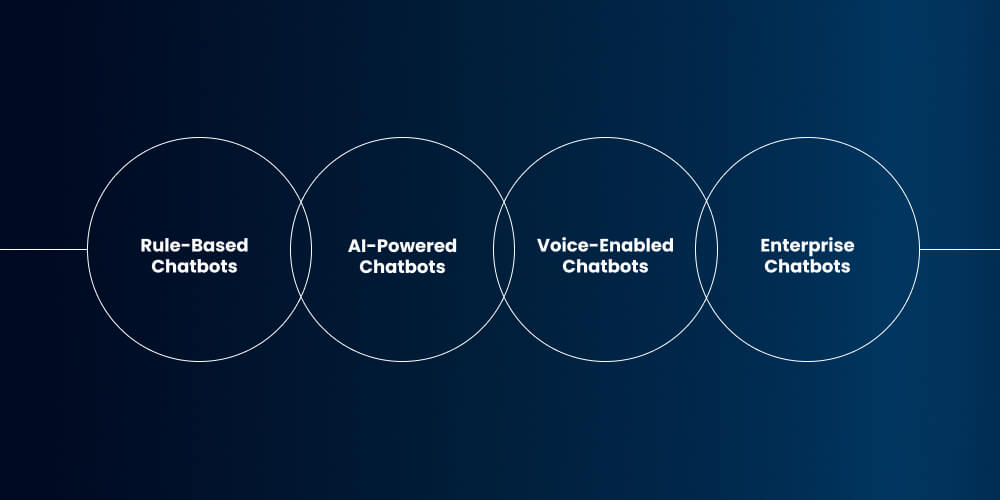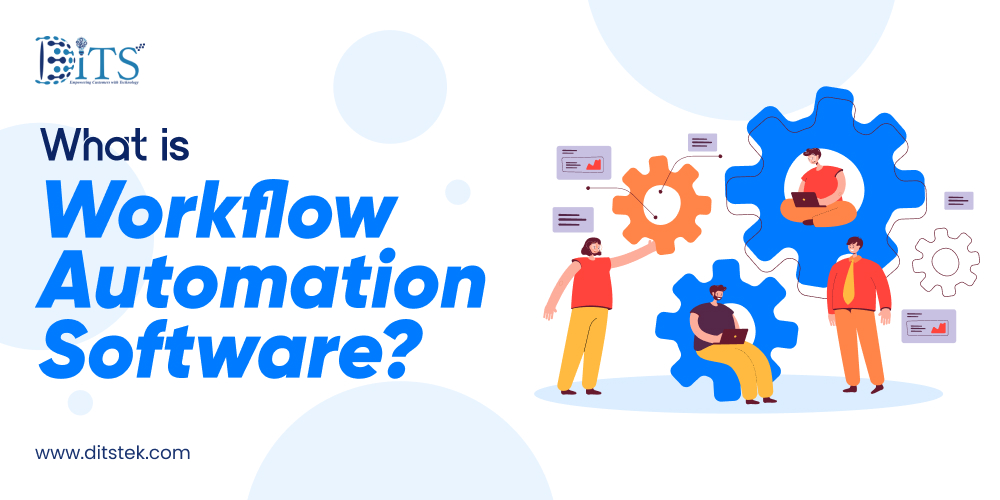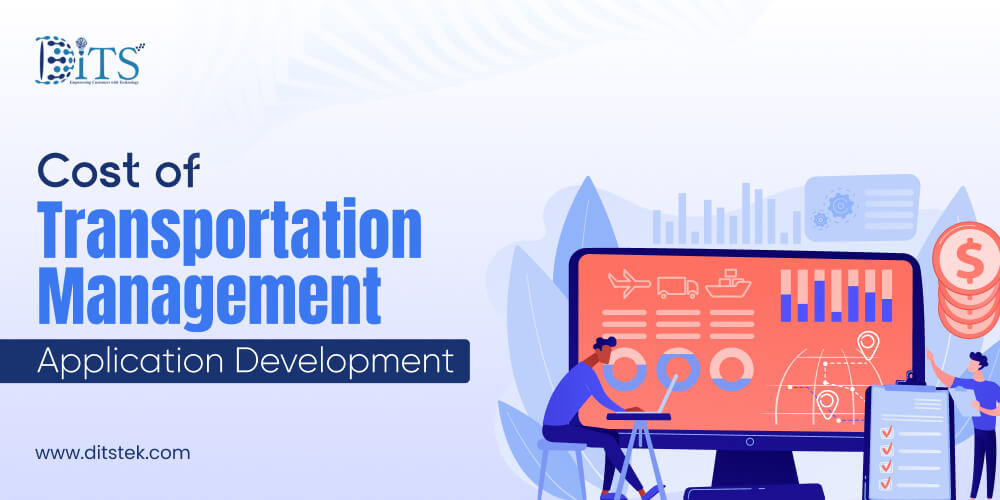A Guide to AI Chatbot Development Cost Breakdown
Table Of Contents
Published Date :
06 Nov 2025
Chatbots are not something new, but they have been a silent revolution for companies that are already redefining their customer experience. They respond to inquiries, assist customers in finding what they want, and even perform minor tasks, such as taking appointments or tracking deliveries. Their non-stop, tireless, and perfect message-receiving nature makes them the favorite of businesses.
By now, it’s only fair to say that when a person utters the words “we want a chatbot,” the next question is pretty much always the same: how much is the whole thing going to cost? The fact is, AI chatbot development does not come with a single set of figures. It varies with each company. It is determined by what functions you require it to perform, where it will be deployed, and its level of intelligence.
Some companies only need a basic bot to answer FAQs. Others need something more advanced — an intelligent chatbot that understands intent, holds a conversation, and connects with CRMs or ticketing systems. This guide will walk you through what really affects the cost and how to plan the right budget without wasting time or money.
Understanding AI Chatbots from Business Perspective
Before getting into the details, let us first understand what exactly an AI chatbot is. It's like a real person that can chat with people, either on your website, app, or social channels. It can welcome visitors, answer questions, or even handle complaints when your staff is busy.
For most companies, AI chatbot development is less about fancy tech and more about saving time. A chatbot can manage hundreds of repetitive questions that would normally flood your customer support inbox. It helps your human agents focus on complex queries while customers still get quick answers.
Another big advantage? Chatbots never stop working. They reply instantly, even at midnight, and they don’t need training breaks or overtime pay. That’s real business efficiency, available 24/7.
Want to Know Your Chatbot’s True Cost?
Every chatbot project is unique. Get a clear cost estimate customized to your business goals and technical needs.
Key Factors Influencing AI Chatbot Development Cost

When companies start looking into ai chatbot development cost, they quickly realize no two chatbots are priced the same. The cost depends on what the chatbot does, how complex it is, and how deep it integrates with your systems.
Chatbot Complexity and Features
Cost associated with the complexity and features is a major factor. A simple chatbot that answers questions using pre-defined scripts will be cheap and quick. On the other hand, using Natural Language Processing with AI is not going to be easy as the machine learning process continues. The bot requires data for training, a smart algorithm, and continuous tuning. The more the bot mimics human behavior, the more effort and time it consumes in development.
Platform Choice
Where is the chatbot going to be hosted? In case it is only for the company website that will be less expensive. However, if it needs to be available on WhatsApp, Facebook, and the mobile app, and that will entail more integrations and testing. The development time and cost might also go up as each platform has its own set of rules and APIs.
Integration Requirements
In some cases, a standalone chatbot will not be enough for a business. It is common for companies to link their chatbot with CRMs, ERPs, or even inventory systems for data to be pulled or pushed in real-time. For instance, when a bot is used for checking order status or service booking, it has to be securely linked to the company’s system. Such integrations generally involve extensive testing and custom work.
AI Model Training and Customization
A chatbot is a data-driven application. The better the data you supply, the greater the performance of the chatbot. Data preparation and labeling is a time-consuming process. In case your enterprise is active in different regions or languages, you will require more training data sets for the chatbot to be multilingual, which will incur additional costs.
Design and User Experience (UX)
This aspect is often neglected, but it has a significant impact. The tone, flow, and overall experience determine how the users perceive your brand. Mapping out conversation paths, drafting messages that sound like humans, and designing a user-friendly chat interface require a lot of creativity and trial and error.
Backend Infrastructure and Security
A powerful system always keeps the chatbot running — servers, databases, APIs, and security layers are hidden behind the chatbot. Cloud-based deployment of the chatbot makes it scalable; however, costs for data storage, bandwidth, and compliance will also arise. The audience size determines the required infrastructure's robustness; the more the audience, the stronger the infrastructure.
In summary, you are not purchasing a mere chatbot. You are acquiring intelligence, security, and scalability that are in line with your business's growth.
Chatbot Types and Estimated Costs

Not every organization necessitates a high-end chatbot immediately. The proper one varies according to your ambitions and the expected level of user interaction.
Rule-Based Chatbots
These are very basic, inexpensive, and entirely appropriate for very simple tasks such as the provision of answers to frequently asked questions. They operate on definite commands and do not comprehend the context. Most organizations invest approximately $5,000 to $15,000 to create one.
AI-Powered Chatbots
These bots are more intelligent. They are capable of understanding the meaning, evaluating responses, and even conversing with humans. Their applications are customer service, lead managing, and internal processes. The price is usually between $20,000 and $50,000 depending on the characteristics.
Voice-Enabled Chatbots
If you prefer your chatbot to communicate by speaking rather than typing this is the right one for you. The bot utilizes voice recognition and voice synthesis technology. Voice bots are powerful but require more resources for additional testing and adjustments which makes them expensive.
Enterprise Chatbots
Designed for large operation or enterprises these chatbots are fully customized from one end to the other. They integrate with in-house tools, offer multiple language support, and can handle thousands of users every day. They usually start at about $60,000 and then the price increases with the size and complexity of the project.
Choosing a chatbot is somewhat similar to selecting a car. You can opt for a basic model that meets your needs or a high-end one that comes with everything. Both can take you to your destination, just in different manners.
Is Your Business Ready for AI Chatbots?
Discover how AI chatbot development can streamline your operations and boost customer satisfaction without breaking your budget.
Detailed Cost Breakdown by Development Stages
Every chatbot development project unfolds in multiple stages, each playing a crucial role in ensuring the end product is functional, intuitive, and aligned with business goals.
| Development Stage | Description | Estimated Cost (USD) | Typical Duration |
| 1. Research and Planning | Understanding business goals, user journeys, and defining chatbot use cases. Includes requirement analysis, technical documentation, and project roadmap. | $1,000 – $3,000 | 1–2 weeks |
| 2. Design and Conversation Flow | Designing the chatbot’s personality, tone, conversation flow, and UI elements. Focuses on user experience and visual consistency. | $2,000 – $5,000 | 2–3 weeks |
| 3. Development and AI Training | Core development phase: coding backend logic, API integrations, NLP setup, and AI model training. Includes testing of intents and responses. | $10,000 – $25,000 | 4–8 weeks |
| 4. Testing and Quality Assurance | Functional, regression, and usability testing. Ensures stability across devices, platforms, and integrations. | $2,000 – $6,000 | 2–3 weeks |
| 5. Deployment and Integration | Setting up cloud environment, connecting chatbot with enterprise systems, analytics, and live databases. | $3,000 – $7,000 | 1–2 weeks |
| 6. Maintenance and Optimization | Post-launch monitoring, model retraining, performance tuning, and security updates. Usually billed monthly or annually. | $500 – $2,000 per month | Ongoing |
Most organizations spend between $18,000 and $45,000 for a full chatbot development project, not counting long-term maintenance or API costs.
Additional and Hidden Costs
Even with a solid development plan, some costs often go unnoticed until later. These are not “extras”, they’re operational essentials that keep your chatbot performing reliably.
- AI or NLP Subscription Fees: Tools like Dialogflow, OpenAI, or IBM Watson often charge usage-based fees.
- Third-Party APIs: Integrations with payment gateways, CRMs, or scheduling tools might carry separate charges.
- Cloud Hosting: Cloud infrastructure like AWS or Azure scales with usage, which can increase monthly bills as your user base grows.
- Ongoing Training and Maintenance: Regularly updating intents, retraining models, and refining data accuracy come with recurring costs.
- Security and Compliance: Encryption, audits, and compliance certifications may require periodic investments.
While these seem minor in isolation, they add up over months of operation. An experienced development team helps identify and plan for these costs upfront, ensuring no surprises later.
Cost-Saving Strategies for Organizations
Cost-effectiveness in chatbot management does not imply a decrease in quality. It is just a matter of good planning. One of the most effective ways is to grow the project from a small scale. Create a Minimum Viable Product (MVP) chatbot that captures the major use cases for your company. Once it starts to produce good results, incrementally add more features.
The use of pre-existing AI or NLP frameworks is also a way to save time and cut down on the effort of development. The goal is to personalize according to the importance and not to redo the whole process.
Working with a team experienced in AI software development also makes a big difference. Professionals already know where you can save time and how to build a structure that scales without constant rework.
At DITS, we are using AI in the process of software development, quality assurance, and customization. AI is a part of every software we develop, including chatbots, to improve accuracy, performance, and reliability in the long run.
Want a Custom Chatbot Cost Breakdown?
Get a detailed, transparent estimate that fits your scale — from MVPs to enterprise chatbots.
Why Partner with DITS for Chatbot Development
Choosing the right development partner is vital, and it can mean the difference between a functional chatbot, and one that adds value. Many organizations have tested off-the-shelf chatbot builders, but for most enterprise needs, out-of-the-box simply does not meet, or function, as required. There is far too much to consider beyond 'plug-and-play', such as security, scalability and integration with business architecture.
At DITS, we take a custom approach to chatbot development. Our focus is to deliver an AI-powered solution that is integrated with your workflows, brand tone, and long-term digital strategy. Each bot that we build is able to grow with your business. From what we can do today with basic customer queries, we will be able to manage much more complex interactions, as your business grows!
And if you’re exploring how to use ai in software development, it’s not just about code, It's about embedding intelligence in every aspect of your system, from decision-making algorithms to testing automation, as an example. At DITS, we use AI in software development to improve code quality, to automate testing and productivity and overall performance. This means every bot we build is intelligent, secure, and scalable, according to your needs!
Conclusion
Establishing your AI chatbot development cost involves more than just cost considerations. It's about positioning yourself to make an intelligent investment for time savings and enhancing the overall experience for your customers. When a chatbot is properly conceived and built, it will decrease the repetitive work people do, hasten response times, and contribute value to your business over time. Make sure to lay out the project, select the proper technology, and partner with an organization that understands your purpose. A chatbot done the right way can create the interaction with your customer base to gain customers, and help grow your business.
Frequently Asked Questions
1. How much does it cost to develop an AI chatbot for a business?
The ai chatbot development cost usually ranges between $18,000 and $45,000 for most organizations. The price can vary depending on the complexity, AI capabilities, integrations, and the number of platforms it needs to support. Enterprise-grade chatbots with advanced features or voice integration can go beyond $60,000.
2. How long does it take to build a chatbot from start to finish?
With a conventional range average of 8 to 14 weeks on the scope of the project and features requested. While a simpler chatbot could be live in a few weeks, when you get into the model training stage of an AI chatbot, timelines could become extended, particularly if testing is included into the process.
3. What factors influence the total development cost?
The main cost drivers will include complexity of the chatbot, quality of design, training a AI model, number of integrations needed, and platform decision. Hosting, data security systems, and ongoing maintenance will also contribute to total cost of ownership.
4. How can a business reduce chatbot development costs without losing quality?
Consider starting small. First, you can create a Minimum Viable Product (MVP) chatbot, test your assumptions with real world users, and then' scale up. You may also leverage existing natural language processing (NLP) frameworks for development, along with a development partner such as DITS, which can help you reduce development time, decrease costs, and still maintain a high quality.
5. Why should businesses work with a professional chatbot development company?
Development partners are professionals that ensure your chatbot project is secure, reliable, scalable and meets your business goals. At DITS, we build AI into every single project we do, from brainstorm to prototyping to testing, to make sure your chatbot has optimal performance, flexibility and measurable results.

Dinesh Thakur
21+ years of IT software development experience in different domains like Business Automation, Healthcare, Retail, Workflow automation, Transportation and logistics, Compliance, Risk Mitigation, POS, etc. Hands-on experience in dealing with overseas clients and providing them with an apt solution to their business needs.
Recent Posts

Workflow automation software enables businesses to automate tasks, streamline operations, boost productivity, and reduce manual effort with ease.

Learn the automotive software development cost breakdown. Discover key pricing factors to help plan your budget and invest wisely in custom automotive software.

A practical breakdown of transportation management application development costs, covering scope, technology, and strategic choices that shape budgets and long term operational value for businesses.
